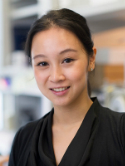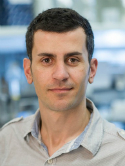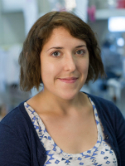Intra-tumor genetic heterogeneity and alternative driver genetic alterations in breast cancers with heterogeneous HER2 gene amplification Journal Article
| Authors: | Ng, C. K. Y.; Martelotto, L. G.; Gauthier, A.; Wen, H. C.; Piscuoglio, S.; Lim, R. S.; Cowell, C. F.; Wilkerson, P. M.; Wai, P.; Rodrigues, D. N.; Arnould, L.; Geyer, F. C.; Bromberg, S. E.; Lacroix-Triki, M.; Penault-Llorca, F.; Giard, S.; Sastre-Garau, X.; Natrajan, R.; Norton, L.; Cottu, P. H.; Weigelt, B.; Vincent-Salomon, A.; Reis-Filho, J. S. |
| Article Title: | Intra-tumor genetic heterogeneity and alternative driver genetic alterations in breast cancers with heterogeneous HER2 gene amplification |
| Abstract: | Background: HER2 is overexpressed and amplified in approximately 15% of invasive breast cancers, and is the molecular target and predictive marker of response to anti-HER2 agents. In a subset of these cases, heterogeneous distribution of HER2 gene amplification can be found, which creates clinically challenging scenarios. Currently, breast cancers with HER2 amplification/overexpression in just over 10% of cancer cells are considered HER2-positive for clinical purposes; however, it is unclear as to whether the HER2-negative components of such tumors would be driven by distinct genetic alterations. Here we sought to characterize the pathologic and genetic features of the HER2-positive and HER2-negative components of breast cancers with heterogeneous HER2 gene amplification and to define the repertoire of potential driver genetic alterations in the HER2-negative components of these cases. Results: We separately analyzed the HER2-negative and HER2-positive components of 12 HER2 heterogeneous breast cancers using gene copy number profiling and massively parallel sequencing, and identified potential driver genetic alterations restricted to the HER2-negative cells in each case. In vitro experiments provided functional evidence to suggest that BRF2 and DSN1 overexpression/amplification, and the HER2 I767M mutation may be alterations that compensate for the lack of HER2 amplification in the HER2-negative components of HER2 heterogeneous breast cancers. Conclusions: Our results indicate that even driver genetic alterations, such as HER2 gene amplification, can be heterogeneously distributed within a cancer, and that the HER2-negative components are likely driven by genetic alterations not present in the HER2-positive components, including BRF2 and DSN1 amplification and HER2 somatic mutations. © 2015 Ng et al.; licensee BioMed Central. |
| Keywords: | clinical article; controlled study; sequence analysis; somatic mutation; clinical feature; gene; gene overexpression; breast cancer; gene expression profiling; in vitro study; mutational analysis; gene dosage; genetic heterogeneity; oncogene neu; copy number variation; human; article; brf2 gene; dsn1 gene |
| Journal Title: | Genome Biology |
| Volume: | 16 |
| Issue: | 1 |
| ISSN: | 1465-6906 |
| Publisher: | Biomed Central Ltd |
| Date Published: | 2015-05-22 |
| Start Page: | 107 |
| Language: | English |
| DOI: | 10.1186/s13059-015-0657-6 |
| PROVIDER: | scopus |
| PMCID: | PMC4440518 |
| PUBMED: | 25994018 |
| DOI/URL: | |
| Notes: | Export Date: 2 September 2015 -- Source: Scopus |
Altmetric
Citation Impact
BMJ Impact Analytics
MSK Authors
-
 762
762Norton -
 646
646Weigelt -
 642
642Reis-Filho -
 155
155Ng -
 130
130Piscuoglio -
 69
69Martelotto -
 10
10Cowell -
 59
59Lim -
 10
10Wen
Related MSK Work



